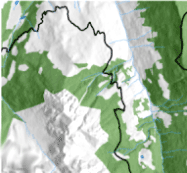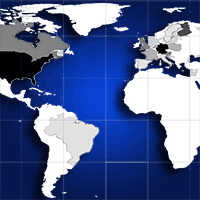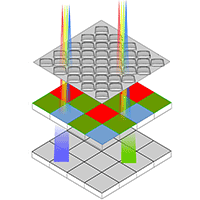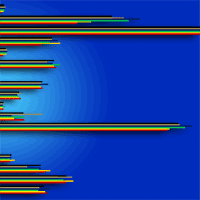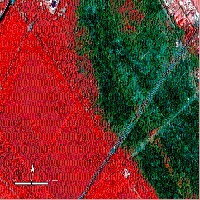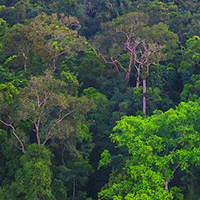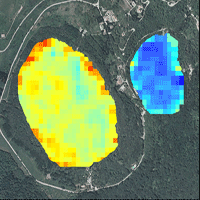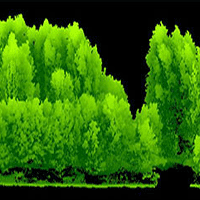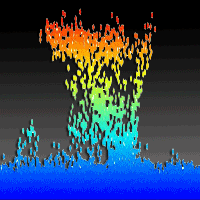
Afforestation monitoring through automatic analysis of 36-years Landsat Best Available Composites
Alice Cavalli (1), Saverio Francini (2-3) , Giulia Cecili (4), Claudia Cocozza (3), Luca Congedo (5), Valentina Falanga (4), Gian Luca Spadoni (4), Mauro Maesano (1), Michele Munafò (5), Gherardo Chirici (3-2), Giuseppe Scarascia Mugnozza (1)
iForest - Biogeosciences and Forestry, Volume 15, Issue 4, Pages 220-228 (2022)
doi: https://doi.org/10.3832/ifor4043-015
Published: Jul 12, 2022 - Copyright © 2022 SISEF
Research Articles
Abstract
The study of afforestation is crucial to monitor land transformations and represents a central topic in sustainable development procedures, in terms of climate change, ecosystem services monitoring, and planning policies activities. Although surveying afforestation is important, the assessment of the growing forests is difficult, since land cover has different durations depending on the species. In this context, remote sensing can be a valid instrument to evaluate the afforestation process. Nevertheless, while a vast literature on forest disturbance exists, only a few studies focus on afforestation and almost none directly exploits remote sensing data. This study aims to automatically classify non-forest, afforestation, and forest areas using remote sensing data. To this purpose, we constructed a reference dataset of 61 polygons that suffered a change from non-forest to forest in the period 1988-2020. The reference data were constructed with the Land Use Inventory of Italy and through photointerpretation of orthophotos (1988-2012, spatial resolution 50 × 50 cm) and very high-resolution images (2012-2020, spatial resolution 30 × 30 cm). Using Landsat Best Available Pixel composites time-series (1984-2020) we calculated 52 temporal predictors: four temporal metrics (median, standard deviation, Pearson’s correlation coefficient R, and slope) calculated for 13 different bands (the six Landsat spectral bands, three Spectral Vegetation Indices, and four Tasseled Cap Indices). To verify the possibility of distinguishing afforestation from non-forest and forest, given the differences between them can be minimal, we tested four different models aiming at classifying the following categories: (i) non-forest/afforestation, (ii) afforestation/forest, (iii) non-forest/forest and (iv) non-forest/afforestation/forest. Temporal predictors were used with random forest which was calibrated using random search, validated using k-fold Cross-Validation Overall Accuracy (OAcv), and further using out-of-bag independent data (OAoob). Results illustrate that the distinction of afforestation/forest reaches the largest OAcv (87%), followed by non-forest/forest (83%), non-forest/afforestation (75%) and non-forest/afforestation/forest (72%). The different OA values confirm that the difference in photosynthetic activity between forest and afforestation can be analysed through remote sensing to distinguish them. Although remote sensing data are currently not exploited to monitor afforestation areas our results suggest it may be a valid support for country-level monitoring and reporting.
Keywords
Afforestation, Remote Sensing, Land Cover Monitoring, Random Forest
Authors’ Info
Authors’ address
Mauro Maesano 0000-0002-4325-951X
Giuseppe Scarascia Mugnozza 0000-0003-0357-4360
Department of Innovation in Biology, Agri-Food and Forest systems - DIBAF, University of Tuscia, v. San Camillo de’ Lellis snc, I-01100 Viterbo (Italy)
Gherardo Chirici 0000-0002-0669-5726
Fondazione per il futuro delle città, Firenze (Italy)
Claudia Cocozza 0000-0002-0167-8863
Gherardo Chirici 0000-0002-0669-5726
Department of Agricultural, Food and Forestry Systems, University of Florence (Italy)
Valentina Falanga 0000-0003-0454-8850
Gian Luca Spadoni 0000-0001-6083-6051
Dept. of Biosciences and Territory, University of Molise, c.da Fonte Lappone, I-86090 Pesche, IS (Italy)
Michele Munafò 0000-0002-3415-6105
Italian Institute for Environmental Protection and Research - ISPRA, v. Vitaliano Brancati 48, I-00144 Rome (Italy)
Corresponding author
Paper Info
Citation
Cavalli A, Francini S, Cecili G, Cocozza C, Congedo L, Falanga V, Spadoni GL, Maesano M, Munafò M, Chirici G, Scarascia Mugnozza G (2022). Afforestation monitoring through automatic analysis of 36-years Landsat Best Available Composites. iForest 15: 220-228. - doi: 10.3832/ifor4043-015
Academic Editor
Agostino Ferrara
Paper history
Received: Dec 20, 2021
Accepted: May 06, 2022
First online: Jul 12, 2022
Publication Date: Aug 31, 2022
Publication Time: 2.23 months
Copyright Information
© SISEF - The Italian Society of Silviculture and Forest Ecology 2022
Open Access
This article is distributed under the terms of the Creative Commons Attribution-Non Commercial 4.0 International (https://creativecommons.org/licenses/by-nc/4.0/), which permits unrestricted use, distribution, and reproduction in any medium, provided you give appropriate credit to the original author(s) and the source, provide a link to the Creative Commons license, and indicate if changes were made.
Web Metrics
Breakdown by View Type
Article Usage
Total Article Views: 32618
(from publication date up to now)
Breakdown by View Type
HTML Page Views: 26664
Abstract Page Views: 3593
PDF Downloads: 1859
Citation/Reference Downloads: 10
XML Downloads: 492
Web Metrics
Days since publication: 1276
Overall contacts: 32618
Avg. contacts per week: 178.94
Citation Metrics
Article Citations
Article citations are based on data periodically collected from the Clarivate Web of Science web site
(last update: Mar 2025)
Total number of cites (since 2022): 13
Average cites per year: 3.25
Publication Metrics
by Dimensions ©
Articles citing this article
List of the papers citing this article based on CrossRef Cited-by.
References
Dinamica di vegetazione in aree di post-abbandono della pianura padana. Report annuale [Vegetation dynamics in post-abandonment areas of the Po Valley. Annual report]. PhD thesis, Archivio Istituzionale della Ricerca (AIR), Università di Milano, Italy, pp. 115. [in Italian]
Gscholar
The EAGLE concept - A vision of a future European Land Monitoring Framework. In: “EARSeL Symposium Proceedings 2013, Towards Horizon 2020”. Matera (Italy) 3-6 June 2013. EARSeL and CNR, Rome, Italy, pp. 551-568.
Gscholar
Random Forest, machine learning. Statistics Department, University of California, Berkely, CA, USA, pp. 33.
Gscholar
The Three Indices Three Dimensions (3I3D) algorithm: a new method for forest disturbance mapping and area estimation based on optical remotely sensed imagery. International Journal of Remote Sensing 42 (12): 4697-4715.
CrossRef | Gscholar
The use of remotely sensed data and Polish NFI plots for prediction of growing stock volume using different predictive methods. Remote Sensing 12 (20): 1-20.
CrossRef | Gscholar
The contribution of remote sensing for afforestation and forest biodiversity assessment. In: Proceedings of the conference “Remote Sensing and Forest Monitoring”. Rogow (Poland) 1-3 June 1999. T. Zawila-Niedzwiecki, M. Brach, Poland, pp. 3-13.
Gscholar
Afforestation: progress, trends and policies. In: Proceedings of the “Scientific Symposium”. Freiburg (Germany) 26-17 February 2000. European Forest Institute Proceedings no. 35, pp. 11-19.
Gscholar
Territorio: processi e trasformazioni in Italia [Territory: processes and transformations in Italy]. Report 296/2018, Istituto Superiore per la Protezione e la ricerca Ambientale (ISPRA), Sistema Nazionale per la Protezione dell’Ambiente (SNPA), Rome, Itay, pp. 88. [in Italian]
Gscholar
Land use / land cover mapping using multitemporal Sentinel-2 imagery and four classification. Remote Sensing 12: 1-27.
Gscholar
RaFITALIA 2017-2018. Rapporto sullo stato delle foreste e del settore forestale in Italia [Report on the state of forests and the forestry sector in Italy]. Compagnia delle Foreste, Arezzo, Italy, pp. 284. [in Italian]
Gscholar
Time series analysis of forest and tree cover of West Bengal from 1988 to 2010, using RS/GIS, for monitoring afforestation programmes. The Journal of Ecology 108: 255-265.
Gscholar
Landsat ecosystem disturbance adaptive processing system (LEDAPS) algorithm description. Report 2013-1057, USGS Science for a Changing World, US Geological Survey, Washington, DC, USA, pp. 17.
Gscholar
Indici vegetazionali da satellite per il monitoraggio in continuo del territorio [Satellite-based vegetation indices for continuous land monitoring]. Italian Journal of Agrometeorology 3: 49-55. [in Italian]
Gscholar
Global characterization and monitoring of forest cover using Landsat data: opportunities and challenges. International Journal of Digital Earth 5 (5): 373-397.
CrossRef | Gscholar
Afforestation and reforestation projects under the clean development mechanism. A reference manual. United Nations Framework Convention on Climate Change, Bonn, Germany, pp. 3-63.
Gscholar

